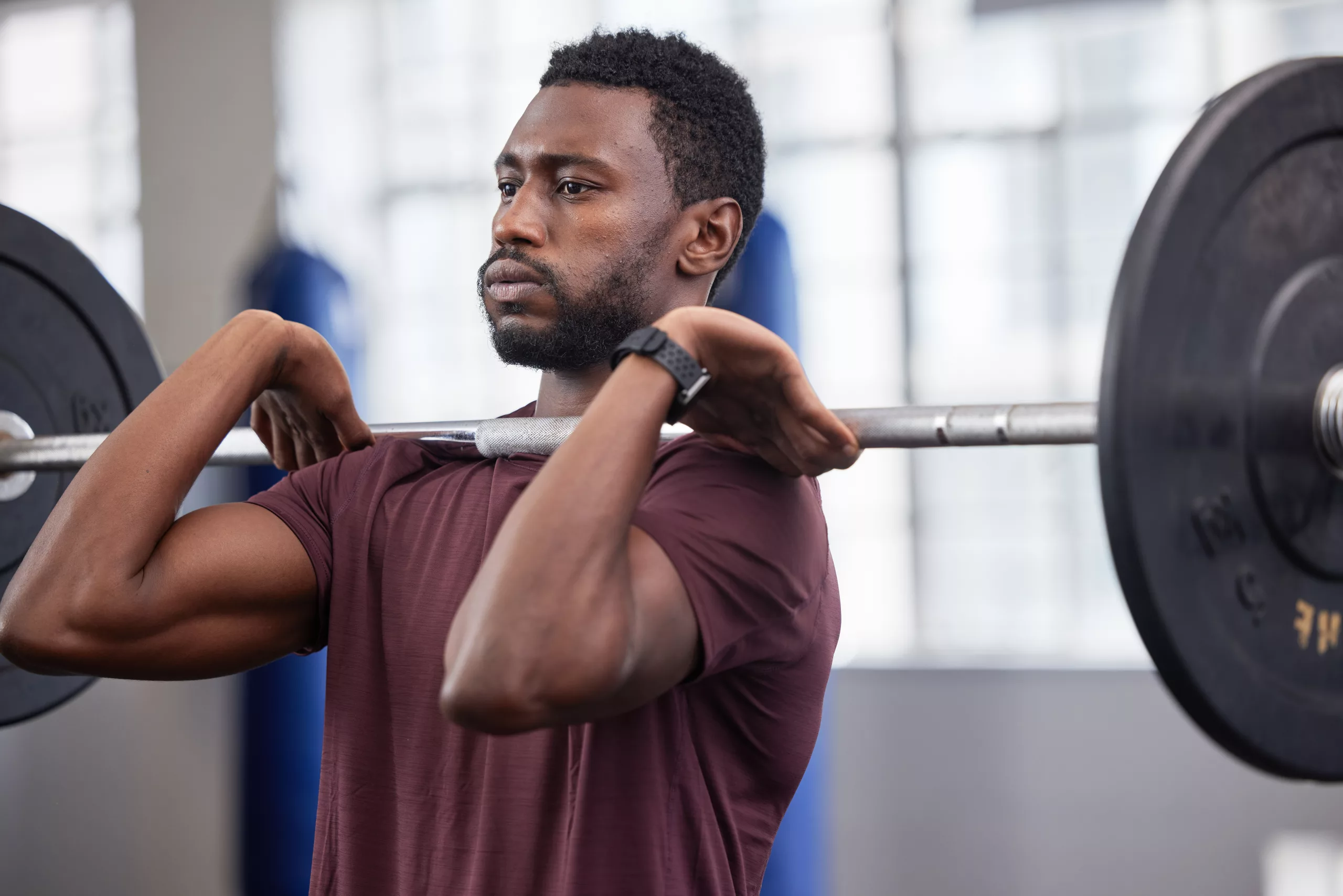
The Push Press: A Powerhouse Exercise for Athletic Performance
Muscular power plays a crucial role in strength training, particularly for enhancing sports performance. The push press emerges as a standout exercise in this context. This whole-body movement not only boosts athletic performance and muscular power but also offers an alternative to squats for targeting the knee extensors or quadriceps.
Why Choose the Push Press?
Incorporating the push press into your workout routine brings several benefits:
- Full Body Activation: This exercise mainly targets leg muscles like the quadriceps and gastrocnemius. However, it’s not restricted to a single muscle group. It’s a holistic movement engaging your entire body.
- Enhanced Force Transmission: The push press improves your force transfer from the lower to upper body as you move the barbell overhead. This skill is vital for overhead athletes and those participating in overhead sports. Even if overhead movements aren’t part of an athlete’s specific sport, they can still gain from adding the push press to their strength and conditioning (S&C) regimen.
- Stepping Stone to Advanced Techniques: Building on the overhead press, the push press paves the way for more intricate Olympic-style lifts, like push and split jerks.
Mastering the Technique: Key Focus Areas
The push press, typically executed with a barbell from a front rack position on the shoulders, consists of three primary phases:
- The Dip: Start by bending at the hips, knees, and ankles simultaneously, ensuring the bar descends vertically.
- The Drive: Following the dip, swiftly extend the hips, knees, and ankles, keeping your weight centered on the mid-foot. This action propels the barbell overhead. For best outcomes, the bar should ascend in a nearly straight vertical line, which might necessitate a minor backward head tilt.
- The Extension: As the barbell elevates overhead, keep pushing it up until your arms fully extend, reaching the bar’s apex.
Exploring Variations and Tools
Although barbells are the go-to equipment for the push press, other variations are available. You can execute the exercise using dumbbells or even from a behind-the-neck position.
Safety First: Tips and Common Pitfalls
Safety and correct technique are paramount in any strength training exercise. Always maintain an upright posture throughout the movement. If you’re a push press novice, think about consulting a professional to ensure proper form. Those with unstable or recent shoulder injuries should exercise caution or seek expert supervision.
Avoid These Common Errors:
- Bar Deviating from the Body: The bar should rise vertically. Minimize forward movement during the overhead press.
- Elevated Chin: This might result in hitting your chin. Keep your chin slightly tucked in.
- Excessive Lower Back Curve: An exaggerated curve can cause injuries or discomfort. Ensure a neutral spine and engage your core throughout the exercise.
Guidelines for Rookies
Beginners should practice the push press regularly, about 1-2 times weekly. Start with sets of 5 reps using lighter weights, prioritizing safety and technique. Before advancing to the push press, you should be adept at the barbell overhead press.
Conclusion
The push press transcends being merely a strength training exercise. It’s a potent tool for amplifying athletic prowess and muscular power.
If you’re in Edmonton and eager to integrate the push press into your regimen, reach out to us at Connect Physiotherapy & Exercise. Our strength and conditioning experts can steer you towards enhanced athletic performance.
Knowledge is empowering, but self-coaching through new exercises can be perilous. This blog offers valuable insights, but it’s crucial to consult a trained professional for precise guidance. Everyone’s unique, as is their exercise progression.
Reference
Bishop, Chris & Chavda, Shyam & Turner, Anthony. (2017). Exercise Technique: The Push Press. Strength and Conditioning Journal. 40. 1. 10.1519/SSC.0000000000000321.

